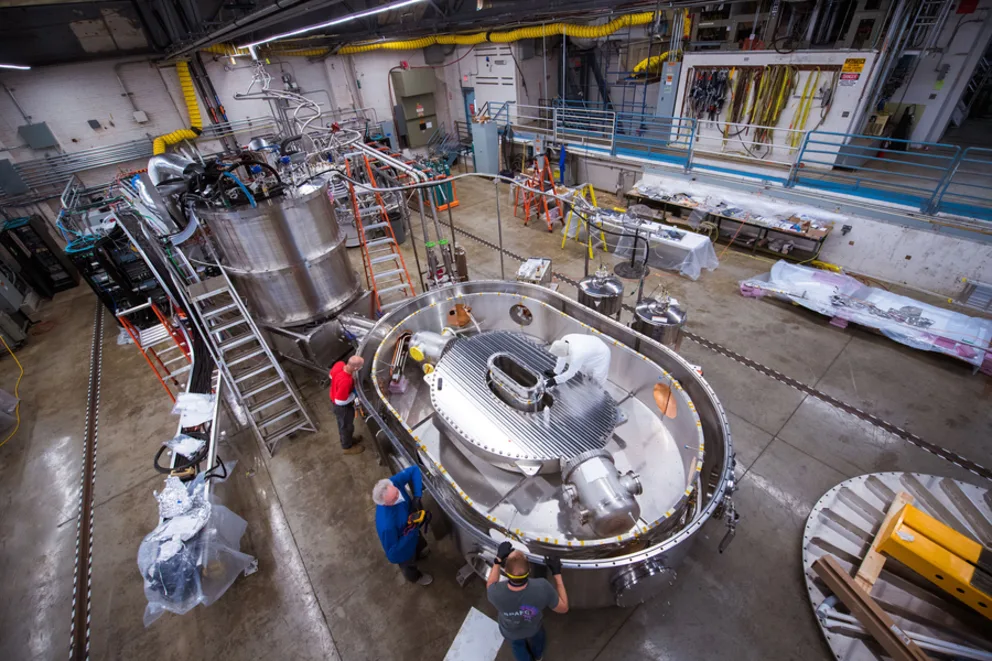The Town of Shaunavon is pleased to welcome Blaze Larson as our new Chief Administrative Officer (CAO) in Training! Originally from Shaunavon, Blaze brings valuable knowledge of our community, along with a strong background in finance from his time at RBC and pursuing his Bachelor’s Degree in Commerce with a Major in Management.
A recently designed project led by Dennis Whyte, Director of the Plasma Science and Fusion Center at MIT, made ground-breaking advances in fusion energy, altering the realm of carbon-free energy production altogether.
This technological advance entails the creation of the strongest fusion magnet in the world which was accomplished for the first time ever on September 5, 2021. The idea for this project originated in an NSE course that Dennis Whyte was leading. Whyte “collaborated with his students to challenge [many of] the current assumptions in fusion”, with the main goal being to hypothesize (and hopefully find) solutions to create viable fusion energy.
Whyte’s scientific journey:
Dennis Whyte grew up in Shaunavon, Saskatchewan where he graduated from Shaunavon High School. Whyte expressed that his passion for fusion energy and physics was sparked at a young age by his father, Russel Whyte, and later on by his high school physics teacher. Russel’s work for Sasktel originally introduced his son to energy and voltage, where most of Dennis’s interest was geared towards Ohm’s Law. Whyte enriched his interest in energy during high school Physics, where he focused on nuclear energy for assigned projects and term papers.
Whyte’s passions for physics did not cease there. He continued his journey at the University of Saskatchewan where he achieved his Bachelor of Engineering Physics. Whyte then moved on to the University of Quebec to pursue and complete his doctorate. For the past 28 years, Dennis Whyte has dedicated his life’s research in fusion energy in the United States where he has published various research papers in Nuclear Fusion and received multiple awards for his work. Whyte has been continuing his research throughout the past 15 years at the Massachusetts Institute of Technology where he was named the Hitachi America Professor of Engineering in 2016. At MIT, Whyte has been working on revolutionary projects, such as the new net fusion energy project SPARC.
The workings of this technology:
In an interview, Whyte stated how fusion energy is essentially “re-creating the source of energy used by stars”, including the Earth’s Sun. Whyte describes how the Sun utilizes fusion energy by a tremendous amount of pressure that heats up hydrogen particles which essentially fuse together lighter elements into heavier compounds. This hydrogen fusion releases a harmless gas: helium. This process “releases 10 million times the energy per particle compared to chemical reactions,” says Whyte. In order for the Sun to maintain their shape throughout this process, they rely on gravity, a force that is being exerted by the Sun’s own mass. The idea is that these newly constructed magnets mimic the force of gravity on the Sun, making it possible to contain the large amounts of energy in the plasma, and therefore harness fusion energy. Prior to the discovery on September 5th, there was no magnet that was able to efficiently achieve viable outputs of fusion energy with the inputs required. With this new magnet, the practicality of using fusion energy is closer to becoming a reality.
The Town of Shaunavon is delighted and honoured to recognize the many accomplishments and advances made by Dennis Whyte, whose roots originate in Shaunavon. Whyte’s impressive scientific achievements will change the course of energy production with the hopes of helping combat global climate change.
For more information on this fusion energy advance, read:
https://news.mit.edu/2021/MIT-CFS-major-advance-toward-fusion-energy-0908
Figure description: collaborative team working on the superconducting magnet housed in MIT.
Image credit: Gretchen Ertl, CFS/MIT-PSFC, 2021.


